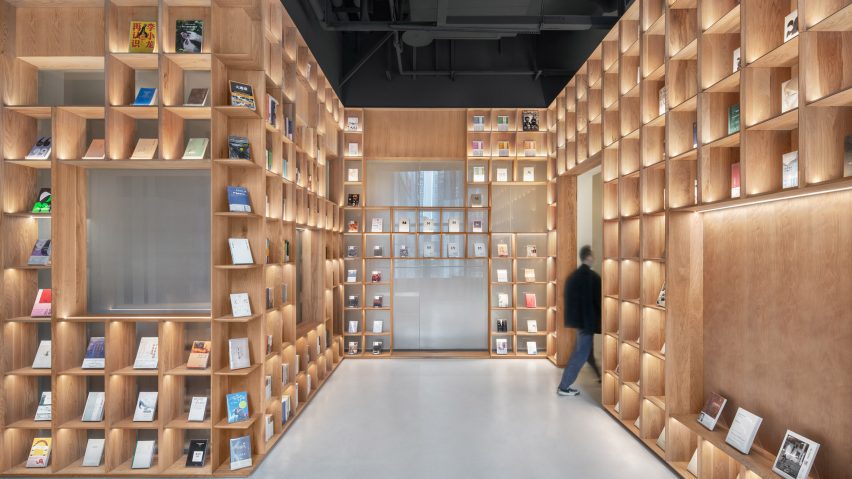
HAS uses frosted glass to "blur boundaries" in Chongqing bookshop
Translucent glass shrouds the books within this bookshop in Chongqing, designed by architecture studio HAS Design and Research.
Located in Chongqing's dense city centre, The Glade Bookstore is a bookshop, restaurant and exhibition space designed to act as a "spiritual and restful place" in the otherwise bustling Chinese city.
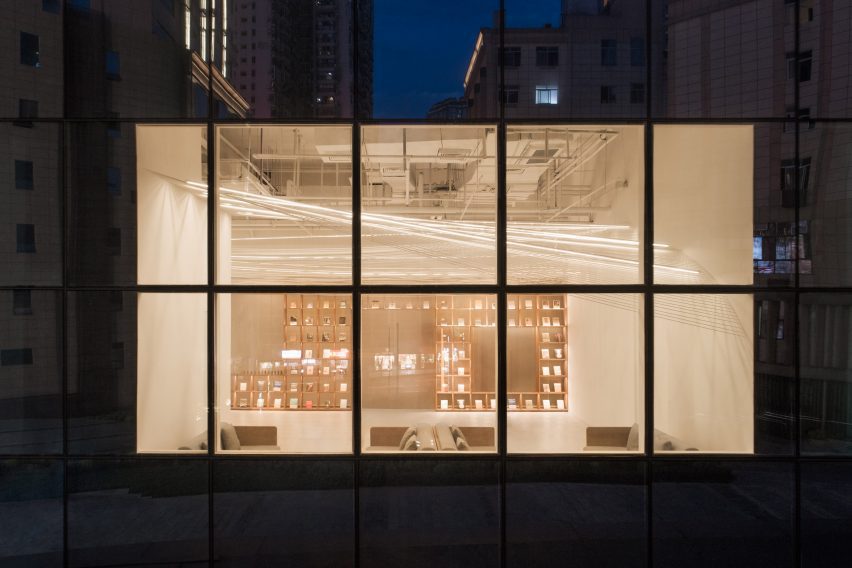
HAS Design and Research (HAS) drew on the prominent Chinese artist Guanzhong Wu's ink painting The Mountain City of Chongqing to create the bookshop, in a bid to blend metropolitan life with the feel of the countryside.
"We started to imagine if the city centre could feel like the traditional Chongqing topography and stilt houses that are in Guanzhong Wu's painting," principal architect Jenchieh Hung told Dezeen.
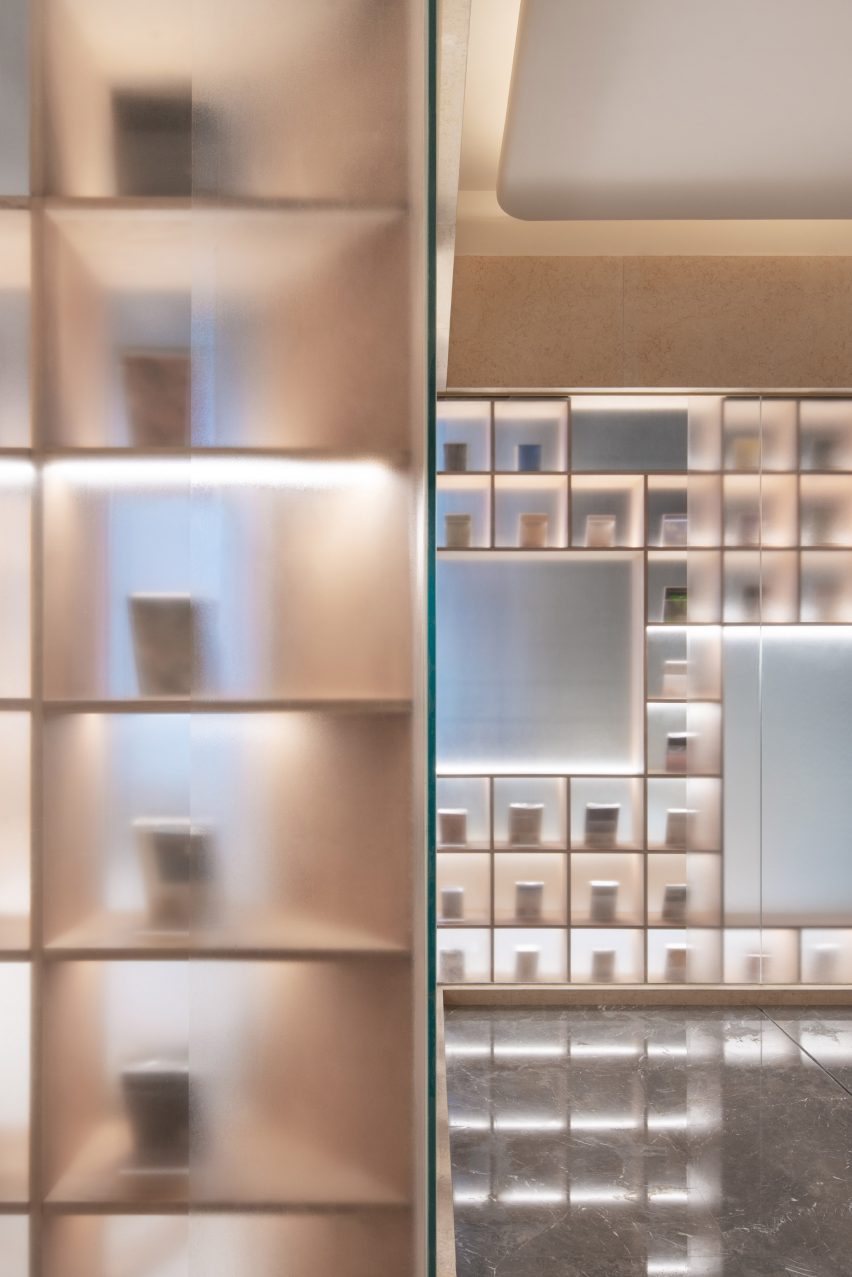
To recapture the spirit of the painting, the architects used organic materials and neutral colours.
Inside, charcoal-coloured walls and a glossy, polished concrete floor create a calming ambience. Books are displayed behind frosted glass panels in Douglas fir bookshelves, effectively "blurring the boundaries" between fiction and reality.
Hung hopes that this element of illusion gives customers some respite from the surrounding "lacklustre concrete constructions".
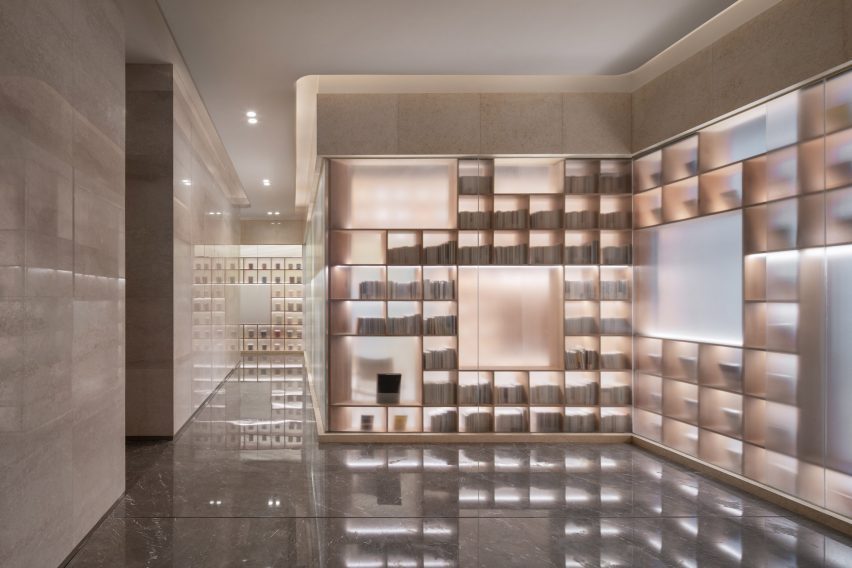
"In our design, we always consider nature, because humans are part of nature and nature teaches us everything, including a spiritual atmosphere and a sense of belonging," said Hung.
"However, in The Glade Bookstore, the visitors aren't able to have any interaction with nature because they are inside the building. So we created a 'man-made nature' inside of the building," he continued.
"For example, the fir wood bookshelf has a unique wooden smell, like a tree. Semitransparent frosted glass blurs the boundaries."
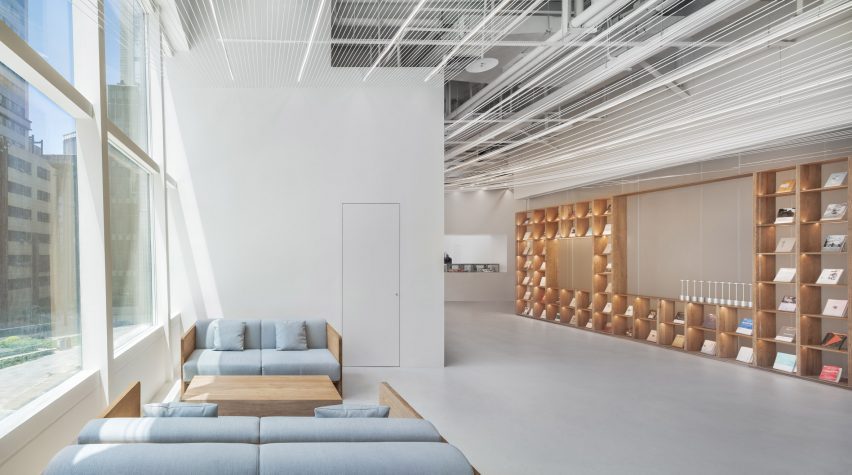
Nestled among a number of high-rise buildings, The Glade Bookstore is spread out over two floors and 1,000 square metres.
The lower floor includes room to read, rest and discuss books. A set of undulating stairs leads to the split-level first floor, which serves as a "micro-mountain city to form a dynamic and explorative reading space".
The second floor provides customers with a place to drink coffee, order from the bakery, drink at the bar and eat at the restaurant. An exhibition space can also be found here.
"We started creating multi-layers of rooms with different heights, trying to link Chongqing topography and stilt houses into our design space," explained Hung.
"The split first floor and second floor have the spatial form of stilt houses; the lower floor is like the 'grey space' of stilt houses," he added.
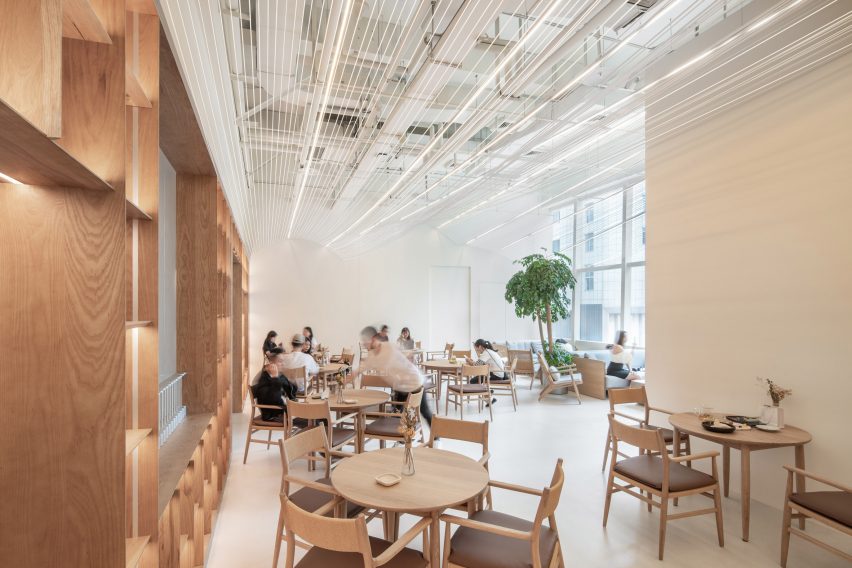
Other bookshops in China include Harbook, a store in Hangzhou, China designed by Alberto Caiola. The store displays books on a giant geometric display that intersects with steel archways, which are designed to attract younger customers.
In Shanghai, local architecture studio Wutopia Lab used bookshelves made from perforated aluminium and quartz stone in the maze-like bookstore.
Photography is by Yu Bai.